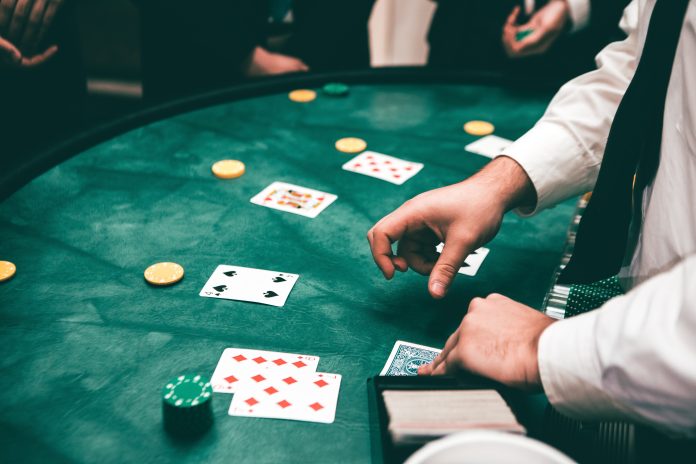
Table games like blackjack, roulette, baccarat, and craps are a staple in casinos. They’re flashy, exciting, and offer the thrill of skill mixed with chance. Players often win, sometimes even big, but in the long run, the house always seems to come out on top.
That’s not just luck. It’s math.
Casinos rely on well-calculated probabilities built into every table game to ensure they maintain a steady profit over time. In this blog, we’ll break down the hidden math behind these games and explain why the odds always lean in favor of the house—eventually.
Understanding the House Edge
What Is the House Edge?
The house edge is a built-in advantage that gives the casino a statistical edge over the player. It’s the percentage of each bet that the casino expects to keep over the long run. Every table game has a house edge, even if it seems like you have a good chance of winning.
For example, in American roulette, the house edge is about 5.26%. That means for every $100 you bet, the casino expects to make $5.26 in profit over time.
It’s All About the Long Term
The key to understanding the house edge is time. You might win in the short term, but the longer you play, the more likely it is that your results will match the mathematical expectations. This is known as the law of large numbers. It ensures that, over thousands of spins or hands, the house edge plays out and guarantees the casino a profit.
Game-Specific Math Examples
Blackjack
Blackjack is often seen as the table game with the best odds for players. With perfect strategy, the house edge can be as low as 0.5%. But very few people play perfectly. Mistakes—like hitting when you shouldn’t or standing when you should hit—can raise the house edge to 2% or more.
Card counting can shift the odds in the player’s favor, but casinos are aware of this and monitor for it closely. Even then, it takes incredible skill and discipline to beat the house consistently.
Roulette
Roulette is a pure game of chance. In American roulette, there are 38 pockets—1 to 36, plus 0 and 00. If you bet on a single number, your chance of winning is 1 in 38, or about 2.63%. But the payout is only 35 to 1. That small difference is where the house edge comes in.
European roulette has only one zero, which lowers the house edge to about 2.7%, making it slightly more favorable to players. But in either case, the math still favors the casino.
Baccarat
Baccarat is another game with simple rules and low house edges. Betting on the banker has a house edge of around 1.06%, while betting on the player carries a slightly higher edge at 1.24%. The “tie” bet, however, has a much higher house edge—often over 14%—making it a bad choice for players despite its tempting payout.
Craps
Craps can be both confusing and exciting due to the many betting options. Some bets, like the “pass line,” have a low house edge of about 1.41%. Others, like “any 7,” have a much higher house edge. The wide variety of bets allows casinos to offer options for all kinds of players, but the house edge is always present in some form.
Why Short-Term Wins Don’t Change the Math
Variance and Luck
In the short term, anything can happen. A player might hit a lucky streak and walk away with a nice profit. This is due to variance—the natural ups and downs of random events. But variance does not change the underlying odds of the game, even at an Australian online casino, where the same principles of probability and randomness apply.
Even if a player wins several times in a row, the game is still operating under the same mathematical principles. Over time, variance evens out, and the house edge takes control.
The Danger of Chasing Losses
Many players believe that after a losing streak, a win is “due.” This is known as the gambler’s fallacy. But in games of chance, each round is independent. The roulette wheel doesn’t remember past spins. Chasing losses often leads to even bigger losses, as players bet more trying to recover.
Casino Design and Player Behavior
Time on Device
Casinos know that the longer you play, the more likely it is the math will work in their favor. That’s why everything from free drinks to windowless rooms is designed to keep you playing. In fact, casinos often measure player value not by how much they bet, but by how much time they spend at the table.
The more hands, spins, or rolls you play, the more the odds will lean toward the house’s favor.
Reinforcement and Near Wins
Table games often give players just enough wins or near-wins to keep them engaged. These small victories encourage you to stay in the game. It creates the illusion that you’re “due” for a big win, even though the math doesn’t change.
Conclusion
The excitement of table games comes from the mix of chance, strategy, and the thrill of a potential win. But behind all the flashing lights and friendly dealers lies a system carefully built on math.
The house edge ensures that casinos will profit in the long run, no matter how lucky a player may get in a single session. Understanding this math doesn’t mean you shouldn’t enjoy table games—but it does mean you should play with awareness and moderation.
In gambling, as in life, knowledge is power. And when you know how the numbers work, you can play smarter—even if the house always wins eventually.




